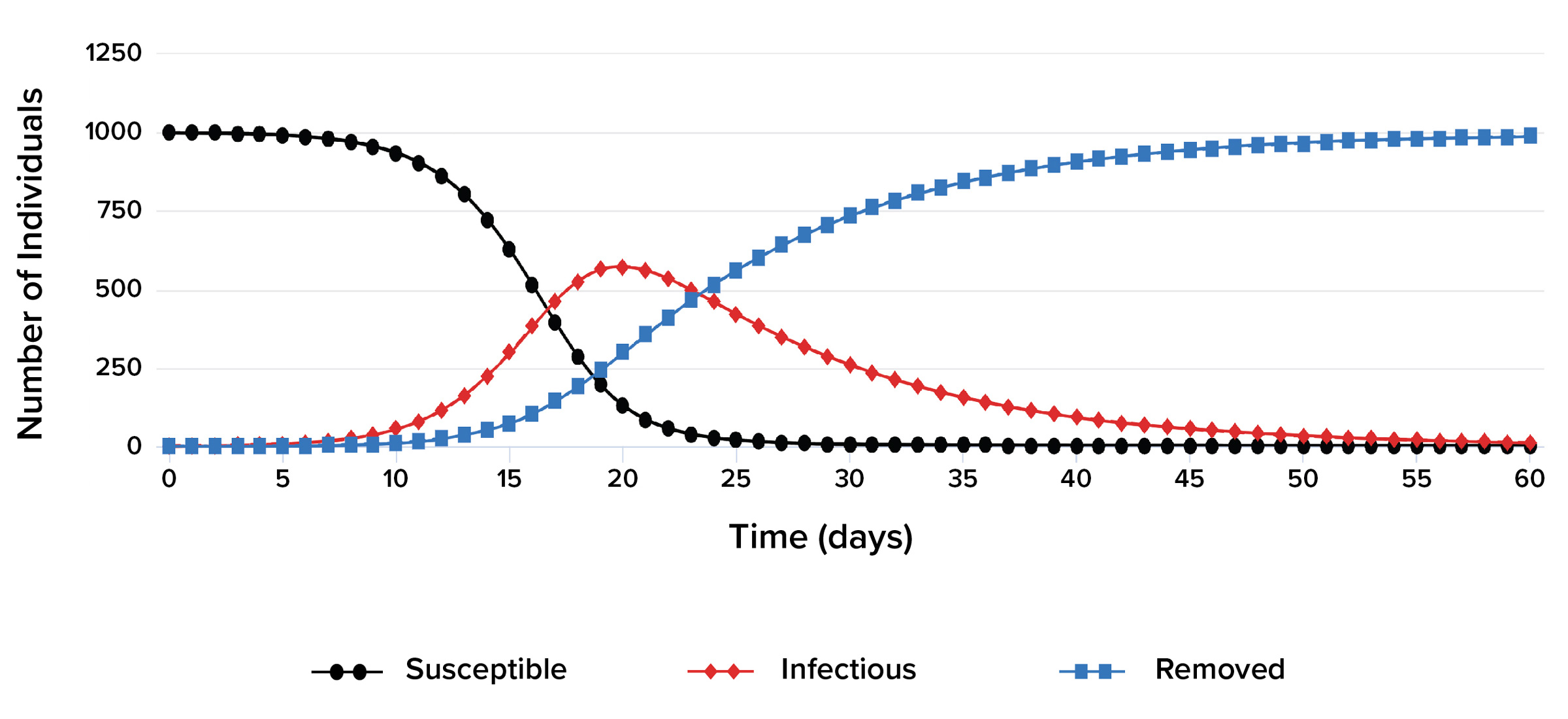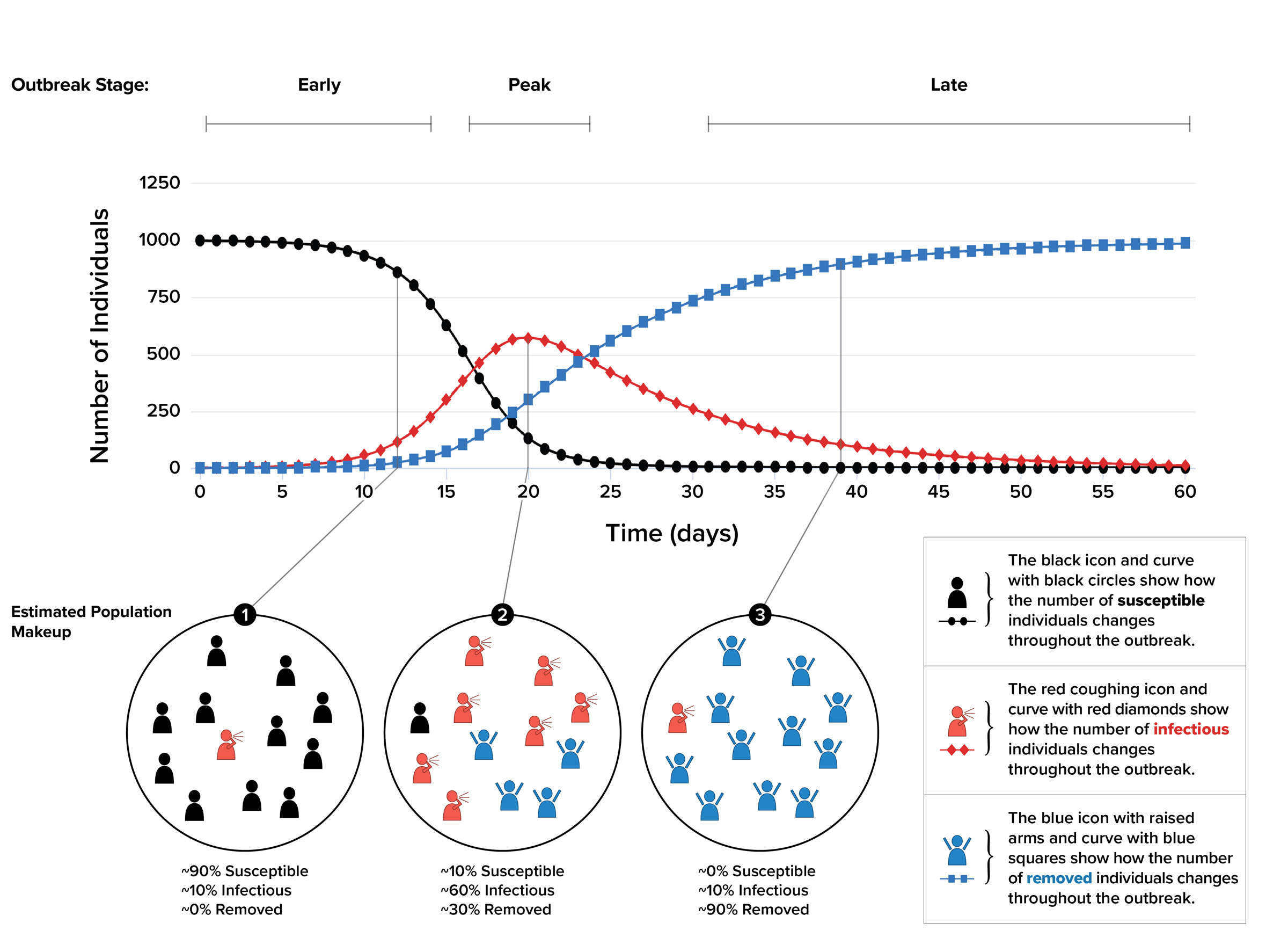SIR Model Basics Summary
Now that you have simulated the spread of an infectious disease in a population, let’s summarize some key takeaways.
Example SIR Graph
The figure shows an example of an SIR graph. Your own SIR graph may look different depending on various factors, like the transmission and recovery probabilities you chose.

In general:
- An SIR graph shows the number of individuals in three groups (susceptible, infectious, and removed) over time.
- The graph shows time (e.g., days) on the x-axis and number of individuals on the y-axis.
- Each curve (line) represents one group.
- As individuals move between groups, the number of individuals in each group changes continuously over time. (However, the total number of individuals in the population stays the same.)
Analyzing and Interpreting an SIR Graph
An outbreak can be divided into three stages: early outbreak, peak outbreak, and late outbreak. When analyzing an SIR graph, we can estimate the population’s makeup (proportion of each group) at each stage.

As you begin analyzing and interpreting your SIR graph, it is helpful to think about what is happening within each group at each stage in the outbreak.
Consider the shapes of the curves in each outbreak stage (early, peak, and late). What might these shapes indicate for each group?
The shapes of the curves depend on factors that affect how long an outbreak lasts and how many individuals are infected at any given time. As you experiment with the “Outbreak Simulator,” take note of how changing the transmission and recovery probabilities may change the shapes of the SIR curves.